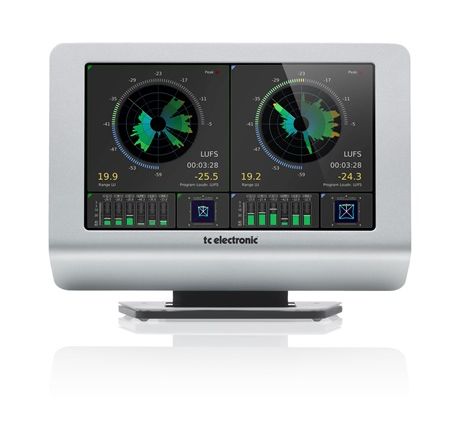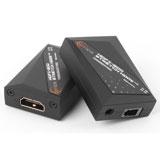Leveringsvoorwaarden Zakelijk
1. ALGEMEEN
A. Deze algemene voorwaarden zullen van toepassing zijn op al de aanbiedingen, prijsopgaven en koopovereenkomsten van Maarten's Sound & Vision (hierna: MSV) aan afnemers (hierna: koper). Op andere dan koopovereenkomsten, met uitsluiting van huurovereenkomsten, zijn deze algemene voorwaarden eveneens van toepassing, voor zover ten aanzien van deze overeenkomsten geen anders luidende, bijzondere voorwaarden gelden.
2. OFFERTES
A. Al onze offertes zijn geheel vrijblijvend en kunnen door ons steeds worden herroepen, ook indien zij een termijn van aanvaarding bevatten.
B. Offertes kunnen uitsluitend schriftelijk worden aanvaard; wij zijn niettemin gerechtigd een mondelinge aanvaarding te accepteren als zou deze schriftelijk zijn gedaan.
C. Offertes komen, tenzij anders schriftelijk verklaart, automatisch te vervallen indien zij door koper niet binnen 14 dagen schriftelijk zijn aanvaard.
D. Tenzij uitdrukkelijk anders blijkt is in onze aanbiedingen geen dienstverlening, BV ter zake van montage in installatie, inbegrepen.
E. Aanbiedingen uit voorraad geschieden altijd onder voorbehoud van tussentijdse verkoop.
F. Overeenkomsten en nadere overeenkomsten, welke niet schriftelijk zijn aangegaan, zijn voor ons eerst bindend na schriftelijke bevestiging onzerzijds. Onze verplichtingen gaan nooit verder dan door ons schriftelijk is bevestigd.
3. LEVERING
A. De door MSV gehanteerde technische specificaties, catalogi, lijsten, maten en dergelijke zijn door MSV naar beste weten opgesteld, doch zijn slechts benaderingen. Excessieve afwijkingen kunnen worden beschouwd als een grond tot ontbinding voor dat deel van de koopovereenkomst waarvoor de overschrijding geldt, in welk geval geen van beide partijen recht heeft op een schadevergoeding.
B. Koper is gehouden de zaken af te nemen zoals omschreven op de opdrachtbevestiging. Indien koper de door MSV af te leveren zaken niet in ontvangst neemt, worden de zaken voor zijn rekening en risico opgeslagen. Indien koper, ondanks sommatie van MSV, de zaken niet binnen twee maanden en voor zijn rekening heeft opgehaald, heeft MSV het recht de zaken aan derden te verkopen en de oorspronkelijke koper voor een eventueel verlies aansprakelijk te houden. De oorspronkelijke koper is ten allen tijde gehouden om de kosten van de hiervoor genoemde opslag en door de verkoper gemaakte kosten te vergoeden.
C. Een overeengekomen leveringstijd gaat pas in nadat alle noodzakelijke gegevens in ons bezit zijn en de betaling, indien en voor zover deze bij de opdracht moet geschieden, is verricht. Opgegeven en/of overeengekomen (af-) levertijden zijn nimmer (te beschouwen als) een fatale termijn, tenzij uitdrukkelijk schriftelijk anders is overeengekomen. Overschrijding van een opgegeven levertijd geeft de koper c.q. opdrachtgever niet het recht de overeenkomst te annuleren, tenzij hij ons schriftelijk alsnog een redelijke termijn voor de levering heeft gesteld en wij ook niet binnen deze termijn aan onze verplichtingen hebben voldaan.
D. Bij annulering zonder rechtsgrond van een koopovereenkomst vervalt elk gedane aanbetaling aan MSV. Koper kan hierna geen enkele rechten meer ontlenen aan deze betaling.
4. TRANSPORT
A. Levering binnen Nederland bij zendingen boven de 2000,00 EURO excl. BTW geschiedt franco huis. Alle transporten van MSV naar koper zijn door MSV verzekerd. Het risico voor verlies of schade aan de goederen, verzonden door MSV aan koper, gaat over op moment van aflevering.
5. PRIJS, BETALING EN ZEKERHEIDSTELLING
A. Alle prijzen zijn exclusief BTW.
B. Betaling van op rekening geleverde goederen dient te geschieden uiterlijk 14 dagen na de factuurdatum, tenzij uitdrukkelijk schriftelijk anders is overeengekomen.
C. Indien de zichttermijn, welke normaal 1 week bedraagt, is verlopen dan is MSV gerechtigd van het geleverde een factuur te sturen, waarvan betaling binnen 14 dagen dient te geschieden.
D. Indien naar het oordeel van MSV termen daartoe aanwezig zijn, is MSV te allen tijde bevoegd te vorderen dat koper deugdelijke zekerheid voor de betaling stelt, ook indien een betalingsregeling is overeengekomen. Bij gebreke van het stellen van zodanige zekerheid, heeft MSV het recht om leveringen, uit hoofde van welke overeenkomst dan ook, op te schorten.
E. Indien koper de verschuldigde bedragen niet binnen de overeengekomen termijn betaalt, zal koper, zonder dat enige ingebrekestelling nodig is, over het openstaande bedrag een rente van 1 % per maand verschuldigd zijn. Indien koper na ingebrekestelling nalatig blijft de vordering te voldoen, kan de vordering uit handen worden gegeven in welk geval koper naast het alsdan verschuldigde totale bedrag tevens gehouden zal zijn tot volledige vergoeding van buiten-gerechtelijke en gerechtelijke incassokosten, advocatenkosten daaronder inbegrepen, waarvan de hoogte wordt bepaald op minimaal 15 % van het totale bedrag.
G. Onze prijzen zijn gebaseerd op de ten tijde van het uitbrengen van de offerte bekende prijsbepalende factoren.
H. Wij zijn gerechtigd onze prijzen aan te passen aan eventuele in het tijdvak tussen het sluiten van de overeenkomst en de levering c.q. betaling optredende wijzigingen in deze prijsbepalende factoren, zoals van grondstoffenprijzen, lonen en valutawisselkoersen, indien na het sluiten van de overeenkomst drie maanden zijn verstreken.
I. Wij zijn steeds bevoegd de prijzen onverwijld aan te passen indien een wettelijke prijsbepalende factor daartoe aanleiding geeft.
6. RECLAMES
A. Koper moet, bij een gebrek in de door MSV geleverde producten en/of diensten, binnen 10 dagen na de levering dan wel prestatie schriftelijk bij MSV reclameren, op straffe van verval van het recht van koper om zich erop te beroepen, dat hetgeen is afgeleverd en/of gepresteerd niet aan de overeenkomst beantwoordt. Indien koper het gebrek niet binnen voormelde termijn had kunnen ontdekken vangt de termijn van 10 dagen aan op de dag, dat koper het gebrek redelijkerwijs had kunnen ontdekken
B. Koper dient MSV te allen tijde in de gelegenheid te stellen de reclame op haar juistheid te onderzoeken. Koper is niet gerechtigd op grond van een reclame met betrekking tot een bepaald product of een bepaalde dienst betaling uit te stellen of te weigeren van andere producten of diensten, waarop de reclame geen betrekking heeft.
7. GARANTIE EN SERVICE
A. Voor garantiebepalingen wordt verwezen naar de bij het apparaat gevoegde garantiecertificaat. Eventueel transport tussen importeur/ fabrikant en MSV komt voor rekening van MSV.
B. Voor recorders is garantie op kopslijtage uitgesloten.
C. Voor occasions wordt de garantietermijn per object bepaald tot een maximum termijn van drie maanden tenzij uitdrukkelijk schriftelijk anders overeengekomen.
D. De garantieverplichtingen vervallen indien de zaken niet overeenkomstig hun bestemming of onoordeelkundig zijn of worden gebruikt, gebruiksvoorschriften niet in acht worden genomen, onvakkundige reparaties zijn verricht, en/of veranderingen zijn aangebracht dan wel nummers zijn verminkt of verwijderd.
8. OVERMACHT
A. MSV is niet aansprakelijk voor schade als gevolg van het niet of niet tijdig kunnen leveren van de overeengekomen producten of diensten, indien het niet, niet tijdig of gebrekkig presteren een gevolg is van omstandigheden, die noch aan de schuld van MSV te wijten zijn, noch op grond van de wet of de in het verkeer geldende opvattingen voor haar risico komen.
9. AANSPRAKELIJKHEID
A. De aansprakelijkheid van MSV voor schade als gevolg van het niet of niet tijdig kunnen leveren van de overeengekomen producten of diensten, dan wel van gebreken in de geleverde producten of diensten wordt volledig uitgesloten, tenzij MSV in staat is om de schade daadwerkelijk geheel of gedeeltelijk op haar leverancier van het onderhavige product te verhalen, in welk geval de aansprakelijkheid van MSV beperkt is tot het schadebedrag, dat zij op deze leverancier weet te verhalen en tenzij de schade is veroorzaakt door opzet of grove schuld van MSV dan wel haar bedrijfsleiding. Onder schade wordt verstaan bedrijfsschade, welke dan ook.
B. De aansprakelijkheid van MSV voor schade als gevolg van beschadiging en/of vernietiging en/of verloren gaan van goederen van koper of derden is beperkt tot het bedrag van de door haar verzekeraar gedane uitkering, vermeerderd met het bedrag van het eigen risico, tenzij de schade is veroorzaakt door opzet of grove schuld van MSV danwel haar bedrijfsleiding. Indien de verzekeraar in enig geval niet tot uitkering overgaat of de schade niet door de verzekeraar wordt gedekt wordt de aansprakelijkheid van MSV volledig uitgesloten, tenzij de schade is veroorzaakt door opzet of grove schuld van MSV dan wel haar bedrijfsleiding. Onder schade wordt verstaan bedrijfsschade, welke dan ook.
C. Koper vrijwaart MSV voor alle aanspraken van derden wegens schade, opgetreden in verband met door MSV aan koper geleverde goederen.
10. ADVIEZEN EN GEGEVENS
A. Onze adviezen worden naar beste kennis van zaken gegeven. Wij aanvaarden echter geen aansprakelijkheid voor (mondeling of schriftelijk) gegeven adviezen. Ons advies kan de koper c.q. opdrachtgever nimmer ontheffen van de plicht tot eigen onderzoek van de te leveren zaken op hun geschiktheid voor het beoogde doel. Hetzelfde geldt voor gegevens omtrent samenstelling van zaken en toepassingsmogelijkheden.
11. EIGENDOMSVOORBEHOUD
A. Wij blijven eigenaar van alle door ons aan koper geleverde en/of hem terbeschikking gestelde zaken totdat hij alles heeft voldaan hetgeen wij uit hoofde van alle verkoopovereenkomsten, die wij met hem hebben gesloten, en alle in dat kader verrichte werkzaamheden of diensten te vorderen mochten hebben of krijgen.
B. Het eigendom gaat voor ons niet verloren indien en/of doordat de koper de van ons ontvangen zaken ver- of bewerkt. Hij gaat bedoelde zaken, in elk geval, automatisch voor ons houden.
C. Indien wij niettegenstaande het bepaalde in het vorige lid de eigendom door welke oorzaak dan ook toch verliezen zal de afnemer c.q. opdrachtgever op ons eerste verzoek alle medewerking dienen te verlenen die nodig is voor het vestigen van al dan niet bezitloos- pandrecht ten behoeve van ons op betreffende zaken.
D. Koper is nimmer bevoegd onder eigendomsvoorbehoud geleverde zaken op enige wijze te bezwaren en/of in (ver)bruikleen en/of in te ruilen en/of anders dan in het kader van zijn normale bedrijfsuitvoering uit handen te geven.
Algemene leveringsvoorwaarden zoals gedeponeerd bij de Kamer van Koophandel te Leeuwarden onder nummer 01080427 op 02-01-2003
























































